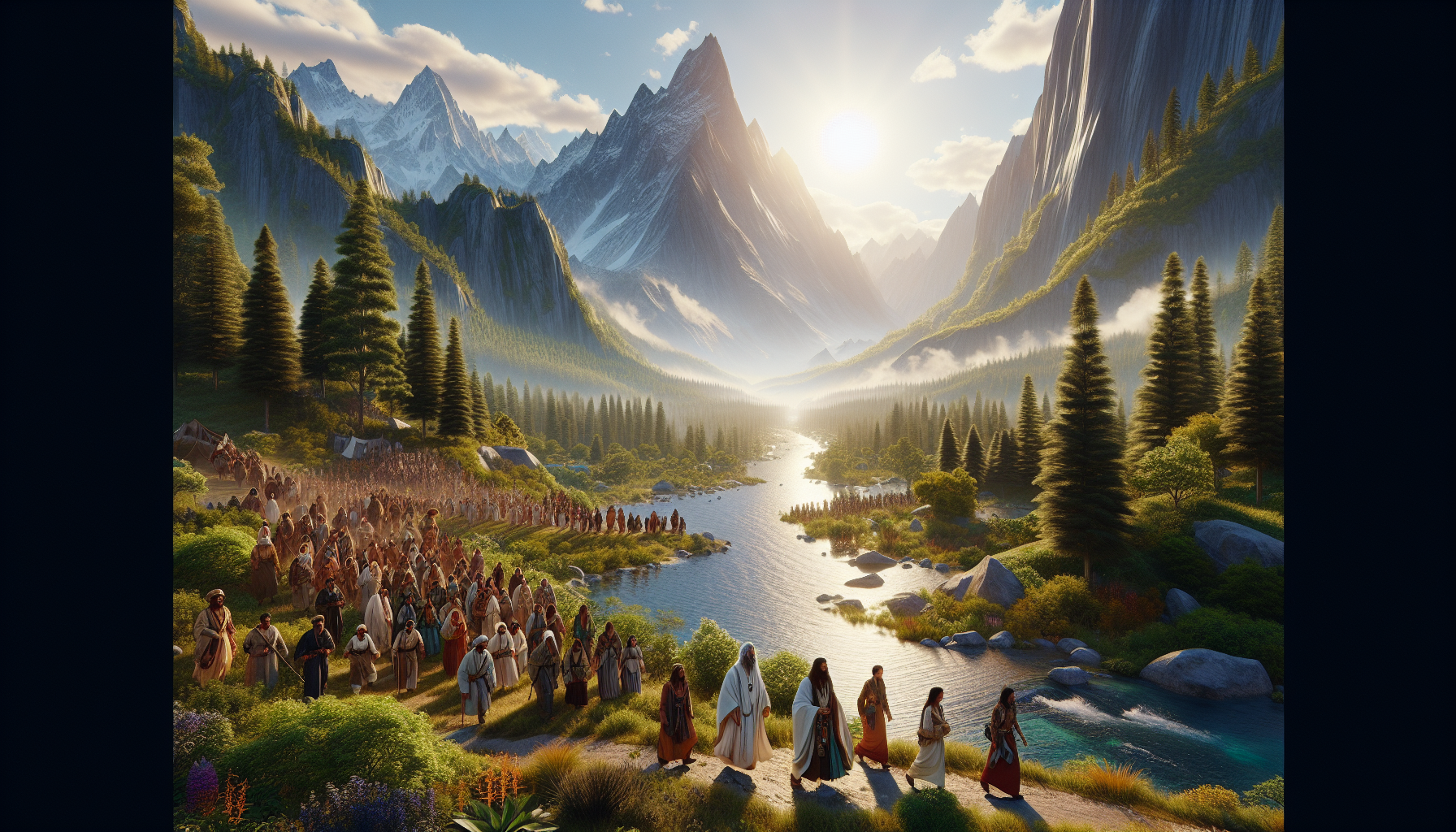Pilgrimage to Gaia: Embracing Earth Through Ancient Practices
In a world progressively drifting towards urban isolation and technological dependence, a heartening movement is awakening among those seeking deeper connection with the Earth. This movement, known as the Pilgrimage to Gaia, is a call to individuals to embrace the planet through spiritual journeys, communion with nature, and revitalized ancient practices. The essence of this pilgrimage is not merely in the physical journey but in cultivating a profound relationship with the Earth, akin to the connection our ancestors once cherished.
The Roots of Gaia: Ancestral Worship and Modern Revival
The word “Gaia” originally stems from ancient Greek mythology, representing the primal Mother Earth, the goddess who personified the Earth itself. Today, the Gaia hypothesis popularized by scientist James Lovelock suggests that the Earth functions as a self-regulating, complex system—a living entity with the capacity to sustain itself. This notion has inspired countless environmental movements and spiritual explorations.
Dr. James Lovelock, in his seminal work, “Gaia: A New Look at Life on Earth”, described Gaia as “…a complex entity involving the Earth’s biosphere, atmosphere, oceans, and soil; the totality constituting a feedback or cybernetic system which seeks an optimal physical and chemical environment for life on this planet.”
Embarking on the Pilgrimage
The Pilgrimage to Gaia is not confined to geographical boundaries. It begins in the mind, encouraging pilgrims to embrace practices that foster harmony with nature. Such practices encompass:
- Meditative Retreats in Nature: Participants spend time in wilderness retreats, immersing themselves in serene landscapes to foster mindfulness and inner peace.
- Ritualistic Offerings and Ceremonies: Borrowed from indigenous traditions, these rituals are undertaken to honor the Earth and establish a reciprocal relationship.
- Sustainable Living Workshops: Educational sessions that teach sustainable practices like permaculture, renewable energy, and zero-waste living.
A Spiritual and Environmental Awakening
The spiritual journey of the Pilgrimage to Gaia aims to mend the disconnect between modern humanity and the natural world. It draws attention not only to individual well-being but to the plight of our planet, resonating with movements like Deep Ecology which emphasize the intrinsic value of nature. As environmental philosopher Arne Naess urged in his work, “the well-being of non-human life on Earth has value in itself, independent of the usefulness of the non-human world for human purposes.”
As pilgrims immerse themselves in Gaia’s embrace, they contribute to global conversations on climate change and ecological preservation. The pilgrimage serves as a call to action against practices that harm the environment, urging adherence to lifestyles that coexist with nature rather than exploit it.
“We are the Earth, through the plants and animals that nourish us. We are the rains and the oceans that flow through our veins. We are the breath of the forests and the voice of the ancestors,” – David Suzuki, geneticist and environmental activist.
The Communal Spirit of the Pilgrimage
A key element of the Pilgrimage to Gaia is fostering community. Pilgrims engage in shared experiences, building networks of like-minded individuals dedicated to Earth preservation. Communities rooted in these values often echo the ethos of ancient communal life, emphasizing cooperation, shared resources, and collective responsibility.
Notable multicultural gatherings such as the Spirit of Nature Festival highlight these communal aspects, bringing together diverse voices and perspectives, all united under the banner of Gaia. Workshops, dialogues, and shared rituals at such events provide participants with tools and insights to carry the pilgrimage’s mission forward.
Concluding Thoughts: Embracing the Journey
The Pilgrimage to Gaia is more than a journey—it is an aspiration to weave a new cultural narrative that honors the Earth. As more individuals embark on this pilgrimage, carrying its lessons into their daily lives, there lies a hopeful vision for a world where humanity and Earth coexist harmoniously.
Through this pilgrimage, individuals are reminded that the path to healing our planet begins within. It is a call to remember that each step taken in reverence to Gaia is a step towards a future where Earth’s beauty is cherished by generations to come.
